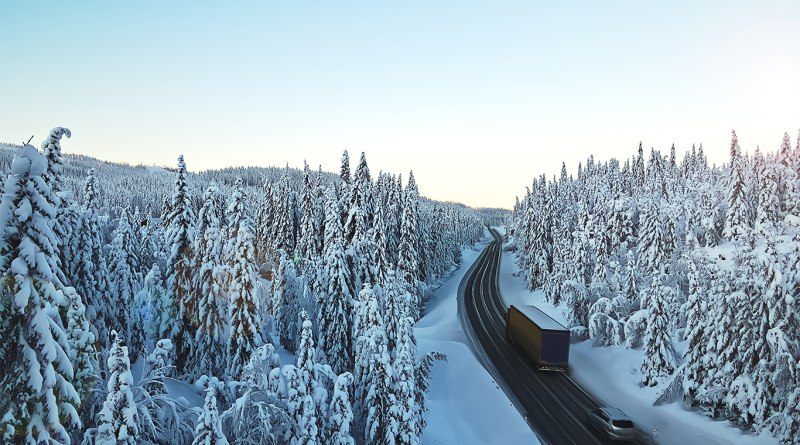How Logistics Companies Tackle Alaska’s Supply Chain Challenges
Alaska, with its vast and rugged terrain, poses unique challenges to supply chains that are unlike anywhere else in the United States. Delivering goods to remote towns and villages across a state that covers over 663,000 square miles, much of which is inaccessible by road, is no small feat. For logistics companies like UPS, FedEx, and local players, maintaining a reliable supply chain in such conditions requires constant innovation, advanced technology, and deep local partnerships. This article explores the innovative strategies and technologies these companies employ to overcome Alaska’s extreme logistical challenges and deliver on their promises, no matter the obstacles.
The Challenges of Delivering in Remote and Harsh Conditions
Alaska’s logistics landscape is defined by its remoteness, severe weather conditions, and limited infrastructure. The state’s geographical vastness means that many communities are reachable only by air or water, with some areas accessible only during certain seasons. Winter temperatures can plummet to minus 50 degrees Fahrenheit, and blizzards, ice storms, and avalanches are common. In summer, thawing permafrost and flooding can make roadways impassable.
These conditions create significant challenges for logistics providers. Delays due to weather are frequent, and transportation costs are higher than in more temperate regions. For instance, air transport becomes a necessity rather than a choice, driving up expenses. Additionally, logistics companies must invest in specialized equipment, such as all-terrain vehicles or reinforced aircraft, to navigate difficult environments safely. The unpredictability of the terrain and weather also heightens the risk of damage to goods, further complicating operations.
These challenges are compounded by limited infrastructure. Unlike most of the continental U.S., Alaska has relatively few major highways, and many of its communities are isolated. Consequently, logistics companies must rely heavily on multimodal transportation strategies that combine air, sea, and overland routes to ensure that goods reach their final destinations.
Innovations Driving Alaska’s Logistics
Despite these formidable challenges, logistics companies have developed a range of innovative solutions to improve efficiency and reliability in Alaska. Technology plays a pivotal role in these efforts. Advanced route optimization software, which uses artificial intelligence (AI) to analyze weather patterns, traffic conditions, and delivery routes, enables companies to make real-time adjustments to minimize delays. For instance, UPS has implemented an AI-based route planning system that reduces fuel consumption and cuts down delivery times, even in the most challenging conditions.
Drone technology is also being explored as a potential game-changer in Alaska’s logistics landscape. Drones can bypass the state’s rugged terrain and deliver small packages directly to remote communities, eliminating the need for ground transportation over vast distances. Companies like Amazon and smaller local startups are experimenting with drone deliveries, particularly for essential items such as medicines and emergency supplies.
Cold chain logistics, which involves transporting temperature-sensitive goods in a climate-controlled environment, is another area of innovation. Given Alaska’s harsh winters, maintaining the integrity of perishable items is crucial. Logistics companies are investing in advanced refrigeration systems and insulated packaging to ensure that items like fresh produce, pharmaceuticals, and electronics arrive in perfect condition.
Additionally, partnerships with local businesses and communities are proving essential. By collaborating with local entities that understand the unique logistical landscape, national logistics companies can leverage local knowledge, resources, and networks to enhance delivery efficiency. This local-global partnership model helps reduce costs, improve service reliability, and build trust with customers.
The Human Factor: Building Relationships and Trust in Remote Deliveries
While technology and innovation are vital, the human element remains equally important in Alaska’s logistics operations. Building relationships and trust with local communities is key to overcoming the state’s delivery challenges. Local knowledge is invaluable when navigating remote areas, where terrain, weather, and accessibility can change rapidly. Partnering with local delivery drivers and businesses allows logistics companies to tap into this knowledge, ensuring safer and more reliable deliveries.
Moreover, maintaining clear communication with customers is critical to managing expectations. In remote areas, where delivery delays are common, transparency about estimated delivery times, potential disruptions, and contingency plans helps build customer trust and satisfaction. Companies that excel in this area tend to have stronger reputations and customer loyalty, even in the face of challenges beyond their control.
Another critical aspect of building trust is reliability. When a delivery route spans hundreds of miles across snow-covered tundra or requires navigating frozen rivers, customers need to know that their goods will arrive on time and in good condition. Logistics companies that deliver consistently against the odds set themselves apart from competitors. This reliability is built through a combination of technology, local partnerships, and a deep understanding of Alaska’s unique logistical landscape.
As Alaska’s logistics companies continue to innovate, sustainability is becoming an increasingly important consideration. The state’s pristine environment is both an asset and a challenge. As climate change accelerates, Alaska is experiencing more unpredictable weather patterns, which complicates logistics operations further. At the same time, there is growing pressure on companies to minimize their environmental footprint.
Electric vehicles (EVs) and alternative fuels are emerging as potential solutions to this challenge. Although EV adoption is still limited in Alaska due to the lack of charging infrastructure and harsh conditions, companies are exploring ways to integrate greener technologies into their fleets. For instance, FedEx has announced plans to replace a portion of its delivery trucks with electric models in regions where charging stations are available.
In addition, sustainable packaging and recycling initiatives are gaining traction. As more consumers demand eco-friendly options, logistics companies are experimenting with biodegradable packaging materials and recycling programs to reduce waste. These efforts align with a broader trend in the logistics industry toward greener practices.
Finally, the potential of new technologies like blockchain for supply chain transparency and efficiency is being explored. Blockchain can help track the journey of goods in real-time, ensuring accountability and reducing delays caused by miscommunication or lack of information.
Sources:
- Alaska Business Magazine – Delivering on the Promise
- Additional research on logistics and supply chain innovations.
